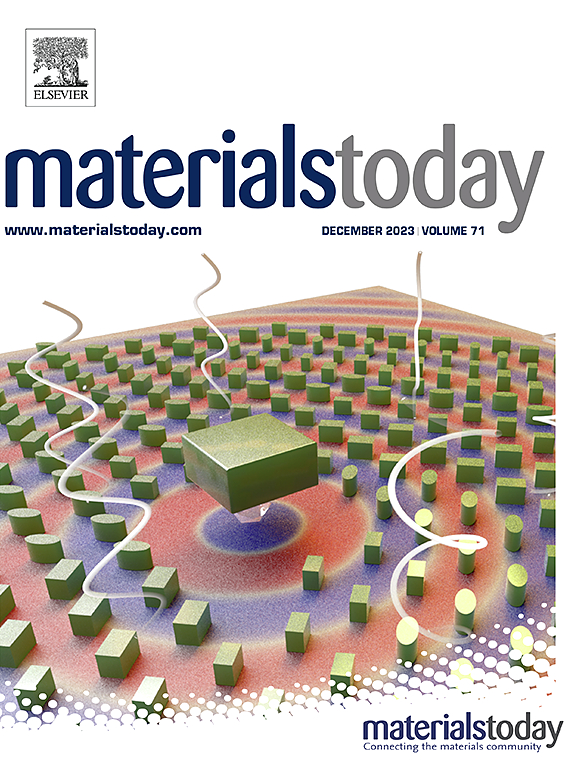梯度结构金属玻璃的应变工程,实现优异的整体水分解
IF 22
1区 材料科学
Q1 MATERIALS SCIENCE, MULTIDISCIPLINARY
引用次数: 0
摘要
金属玻璃(mg)由于其独特的无序原子结构,代表了前沿的电催化剂。然而,提高MG催化剂的活性是一个重大的挑战。在本研究中,我们提出了一种创新的梯度结构设计,旨在将应变效应引入非贵金属Ni40Fe40P20 MG丝中,从而大大提高其水电解效率。我们的新设计策略已成功地应用于使用泰勒-乌里托夫斯基(TU)方法制造的各种成分MG线。梯度结构金属玻璃(gs - mg)能够获得大而一致的表面拉伸应变,从而改变电子结构,从而显著提高催化性能。此外,采用具有全三维纳米孔结构的独立式Ni40Fe40P20 gs - mg作为整体水分解电池的正极和阳极,在碱性介质中取得了突破性的性能。值得注意的是,在电流密度为10 mA cm - 2和1000 mA cm - 2时,电池的电位分别降低了1.378 V和1.682 V,超过了贵金属催化剂和之前报道的先进电催化剂。该研究表明,梯度结构诱导的应变工程是提高mggs催化性能的一种普遍有效的策略。它为高效水分解应用的发展引入了一个新的范例。本文章由计算机程序翻译,如有差异,请以英文原文为准。

Strain engineering in gradient-structured metallic glasses for excellent overall water splitting
Metallic glasses (MGs) represent cutting-edge electrocatalysts due to their distinctive disordered atomic structure. However, enhancing the activity of MG catalysts poses a significant challenge. In this study, we present an innovative gradient structure design aimed at introducing strain effects into non-noble Ni40Fe40P20 MG wires, resulting in a substantial enhancement of their water electrolysis efficiency. Our novel design strategy has been successfully implemented in various composition MG wires fabricated using the Taylor–Ulitovsky (TU) method. The gradient-structured metallic glasses (GS-MGs) enable the attainment of large and consistent surface tensile strain, which in turn modifies the electronic structure, leading to a remarkable improvement in catalytic performance. Furthermore, employing free-standing Ni40Fe40P20 GS-MGs with a fully three-dimensional nanoporous structure as both cathode and anode in the overall water-splitting cell has achieved breakthrough performance in alkaline media. Notably, the cell exhibits significantly reduced potentials of only 1.378 V and 1.682 V at current densities of 10 mA cm−2 and 1000 mA cm−2, respectively, surpassing precious metal catalysts and previously reported advanced electrocatalysts. This study demonstrates that strain engineering induced by gradient structures is a universal and effective strategy for enhancing the catalytic performance of MGs. It introduces a new paradigm for the development of high-efficiency water splitting applications.
求助全文
通过发布文献求助,成功后即可免费获取论文全文。
去求助
来源期刊

Materials Today
工程技术-材料科学:综合
CiteScore
36.30
自引率
1.20%
发文量
237
审稿时长
23 days
期刊介绍:
Materials Today is the leading journal in the Materials Today family, focusing on the latest and most impactful work in the materials science community. With a reputation for excellence in news and reviews, the journal has now expanded its coverage to include original research and aims to be at the forefront of the field.
We welcome comprehensive articles, short communications, and review articles from established leaders in the rapidly evolving fields of materials science and related disciplines. We strive to provide authors with rigorous peer review, fast publication, and maximum exposure for their work. While we only accept the most significant manuscripts, our speedy evaluation process ensures that there are no unnecessary publication delays.
 求助内容:
求助内容: 应助结果提醒方式:
应助结果提醒方式:


